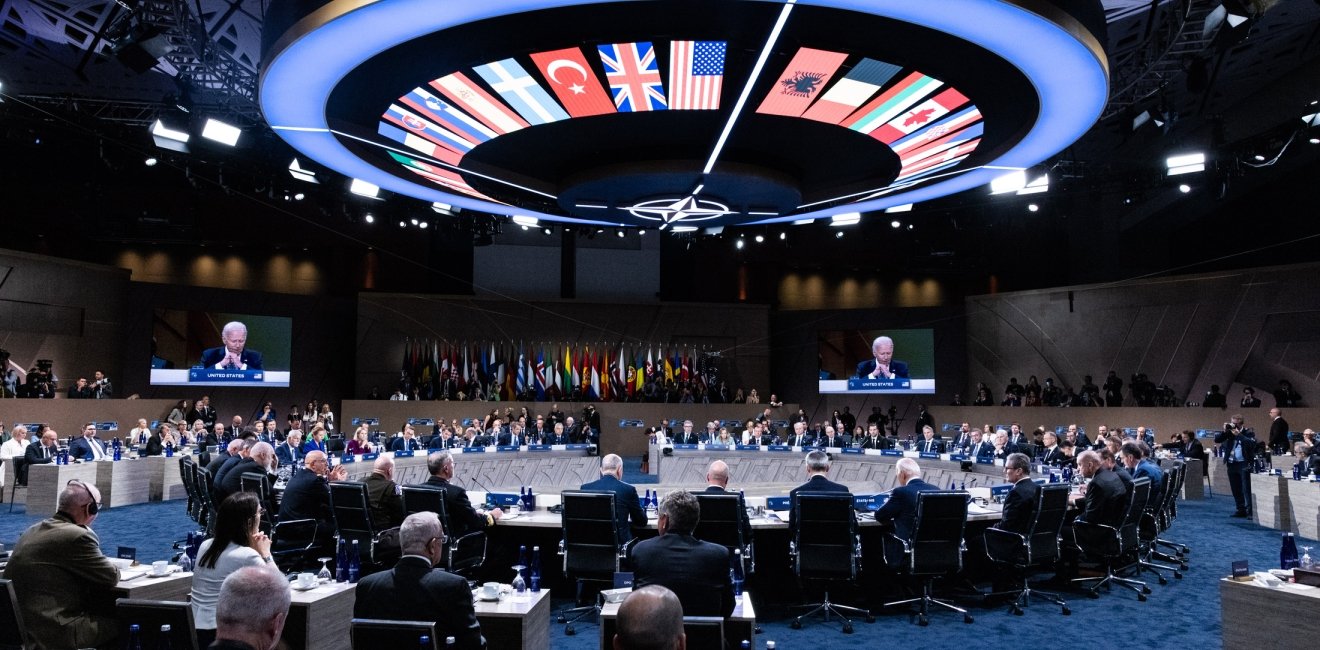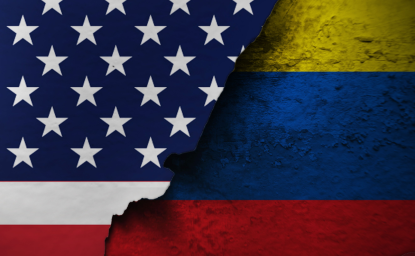From July 9-11, 2024, NATO leaders met in Washington, DC for the alliance's 33rd annual summit. Canada entered the week heavily criticized for spending below 2% of its GDP on defense and lacking a plan to reach that level in its latest defense policy update. By the summit's conclusion, Canada had announced multiple partnerships and spending commitments, including that it would meet NATO's defense spending guideline within eight years.
Challenges remain as Canada steps up
Andrea Charron
Global Fellow, Canada Institute
Canada has not been sitting still. Eye watering amounts of military investments have been promised (at least compared to decades of past budgets) by the Canadian government in the last four years, but they still did not reach 2% of GDP. Canada now has a road map to meet its NATO commitment, but not until 2032. Can the government spend the money and coordinate the very technically ambitious projects requiring industry, allies and DND to be in lock step or is this all tantamount to drinking from a fire hose? While Canada’s financial support to Ukraine has been among the highest of NATO allies, and Canada’s military is still one of the best trained, recruitment and retention woes, an overly bureaucratic procurement system, lack of current strategies (foreign, defense and national security) and a more contested world are all speed bumps along the road to 2032.
Canada's motivations for 2%
Lindsay Rodman
Global Fellow, Canada Institute
The NATO Summit was an excellent opportunity for Prime Minister Trudeau to announce this commitment to increasing Canada’s defense capability and to obtain global attention for the announcement. The increase in spending is great for NATO, as it contributes to overall capability within the alliance. However, it is not likely to be as motivated by NATO as some might presume. For Canada, this is just as likely to be a grab for attention from AUKUS – with a hope to someday be invited into the new Pacific alliance – as it is a declaration of support for NATO.
Looking beyond the big announcement
Xavier Delgado
Associate, Canada Institute
Canada’s announcement that it will reach NATO’s defense spending guideline by 2032 has rightfully taken much of the attention coming out of last week’s NATO summit. Allies have long pushed for Ottawa to meet the spending commitments it first agreed to during the 2014 Wales summit and reaffirmed at the 2023 Vilnius summit. In the weeks leading up to the summit, US political leaders publicly shamed Canada for its laggard defense spending and privately appealed to the Prime Minister’s Office to hasten the timeline outlined in the latest Canadian defense policy update, Our North, Strong, and Free.
However, the 2032 timeline was just one of a handful of major defense commitments made in Washington last week. Canada also announced 500 million CAD in military assistance for Ukraine and an expansion of its training program for Ukrainian pilots. In a week where allies sought to rally behind Volodymyr Zelensky and project a united front to Vladimir Putin, these actions reaffirmed Canada’s resolve as the war approaches 30 months of hostilities.
More notably, Canada unveiled two multilateral pacts – one for building icebreaker ships with Finland and the United States (ICE pact) and one for northern maritime defense with Germany and Norway – that will strengthen the country’s naval capabilities in the geopolitically important Arctic region.
Russia’s fleet of icebreaker vessels outnumbers that of all three ICE pact partners combined and China, claiming the dubious status of near-Arctic state, quietly began building its third icebreaker last summer. The pact provides a collaborative framework for Canada, Finland, and the United States to pool resources and expand NATO’s Arctic assets, providing much-needed vessels to their own fleets and creating a producer-of-choice for allies.
The yet-to-be-named agreement with Germany and Norway is more nascent and less detailed. Little has been established beyond that the three partners will collaborate on matters of North Atlantic security. It is unclear whether Canada also intends to Germany and Norway in their submarine production pact, though doing so could strengthen Ottawa’s case for being invited to join the AUKUS security pact it was snubbed from in 2021. Canadian officials have previously noted that they plan to acquire new submarines but have not given an outline for timing or funding.
As a whole, these commitments signal that Ottawa is aware of the damage that low defense spending has inflicted upon Canada’s international reputation. These agreements and pledges strengthen Canada’s contributions to global security, even if they will not immediately be reflected in its defense spending figures or hasten the timeline for meeting the 2% of GDP guideline. While allies should not relent in pressuring Ottawa to meet its spending commitment – and importantly, share its plan for doing so – they should appreciate that Canada is contributing in ways that may not appear on the bottom line.
Confrontation averted, for now
Richard Sanders
Global Fellow, Canada Institute
Prime Minister Trudeau’s announcement at the Washington NATO summit committing Canada to spending two percent of gross domestic product on defense by 2032 will help to avoid what could have been a significant point of friction with the United States and other allies.
Canada had been slowly ramping up defense expenditures, which had been cut dramatically with the end of the Cold War (save for a spike during its engagement in Afghanistan). Its long-delayed decision to purchase 88 F-35 stealth fighter aircraft had been welcomed in Washington as had been the multi-decade effort it had begun to rebuild its navy. Nonetheless, given the changed international security environment in which the great majority of NATO member states are meeting or exceeding the two percent commitment, Canada’s status as a laggard, devoting only 1.37 percent of gross domestic product, was becoming untenable.
Meeting this commitment will be challenging, as Canada’s defense procurement capacity is already stretched. And, of course, defense spending will have to compete with other priorities in annual budgets. But if Canada makes good on it, this will contribute importantly to bolstering its longstanding security relationship with the United States both in NATO and NORAD.
Contributors

Director, Centre for Defence and Security Studies (CDSS); Professor, Political Studies, University of Manitoba

Former Executive Director, Leadership Council for Women in National Security

Research Director, Washington Forum on the Canadian Economy

Former member of the Senior Foreign Service of the U.S. Department of State

Canada Institute
The mission of the Wilson Center's Canada Institute is to raise the level of knowledge of Canada in the United States, particularly within the Washington, DC policy community. Research projects, initiatives, podcasts, and publications cover contemporary Canada, US-Canadian relations, North American political economy, and Canada's global role as it intersects with US national interests. Read more

Explore More
Browse Insights & Analysis
The OSCE is a Good Value for America



